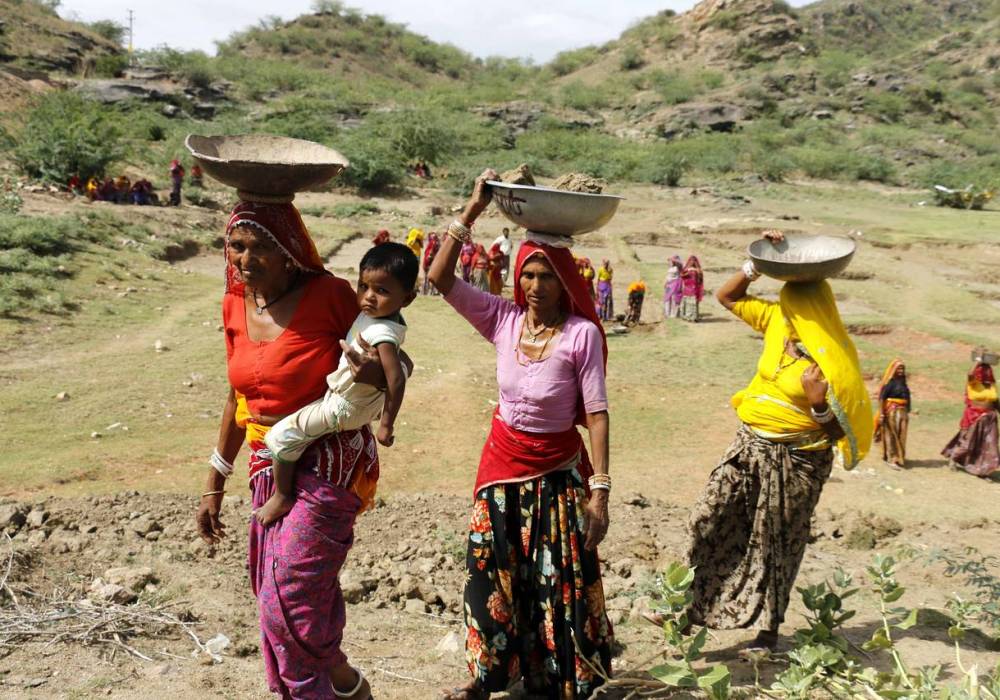Climate change is one of the most fundamental challenges facing the international community today, with ample impacts not only on the environment but also on economic and social development. The effects of climate change will vary among regions, income groups and occupations, between different generations as well as gender. A report issued by the World Bank suggests that India's economic progress could be severely hampered, with an additional 45 million pushed into poverty, due to the effects of climate change.
According to UNFCC, Climate change has a greater impact on those sections of the population, in all countries, that are most dependent on natural resources for their livelihoods.
Women commonly face higher risks and greater burdens from the impacts of climate change in situations of poverty and the majority of the world’s poor are women. Women’s unequal participation in decision-making processes and labour markets compound inequalities and often prevent women from fully contributing to climate-related planning, policy-making and implementation.
Men and women are differentially affected by climate change, especially when it comes to safeguarding their food security and livelihoods. Climate variability amplifies food shortages in which women consume less food and suffer from reproductive tract infections and water-borne diseases after floods. Table 1 show that the 10-year drought in Australia’s Murray-Darling Basin differentially affected men and women, owing to their distinct roles within agriculture. Alston (2011) noted social disruption and depression, most profound in areas with almost total reliance on agriculture, no substitute employment, and limited service infrastructure. In India, more women than men, especially women of lower castes, work as wage labourers to compensate for crop losses.
Climate-related disasters or gradual environmental deterioration can affect women’s mental health disproportionally due to their multiple social roles. Anecdotal evidence suggests that women tea pickers in Malawi, Kenya, India, and Sri Lanka suffer and die from heat stress as payment by quantity discourages rest breaks. Social conditioning affects mortality for women and men.
Although women are important food producers and providers, they have limited access to and control of resources, on the one hand. On the other hand, because of their central role in agriculture, women are great agents of social change. In fact, the FAO State of Food and Agriculture 2010-11 estimates that more than 100 million people could be lifted out of poverty if women had the same access to and control of resources as men. Therefore, responses to climate change in agriculture must be gender-specific. Initiatives need to ensure that women are included in climate change mitigation and adaptation activities and strategies designed to enhance food security and livelihoods. To date, however, there has been little focus on how men and women mitigate risks and adapt to challenges brought about by climate change.
Table 1: Examples of gendered climate experiences.
|
Experiences |
Male farmers |
Female farmers |
|
Increased workload |
Demanding tasks such as feeding livestock, carting water, destroying frail animals (A) |
Assistance with farm tasks and working off the farm for additional income (A) |
|
Increased migration for wage labour, typically farther away from home (I) |
Increased collection of firewood and uptake of wage labour (especially lower castes) in neighbouring villages (I) |
|
|
Community interactions, isolation, and exploitation |
Locked into farms, loss of political power (A) |
Increased interactions and care giving work, taking care of others’ health at the expense of their own (A) |
|
Exploitation by labour contractors when migrating (I) |
Disadvantage in accessing institutional support and climate information (I) |
|
|
Physical and psychological toll |
Feel demonized (farmers seen as responsible for crisis), increased stress, social isolation, depression, and high suicide levels (A) |
Working lives appear indefinite, resulting in increased stress (A) |
|
|
Increased anxiety to provide food and access loans and escape trap of indebtedness, increase in domestic fights, sometimes suicide (I) |
Increased pressure to provide food and save some more from sale for consumption, less food intake, increase in domestic fights (I) |
(A) = Australia (ten-year drought, 2003 –2012), based on Alston (2011); (I) = India (climate variability and changing climatic trends), based on Lambrou and Nelson (2013). (Source: Olsson, L., et al., 2014)
